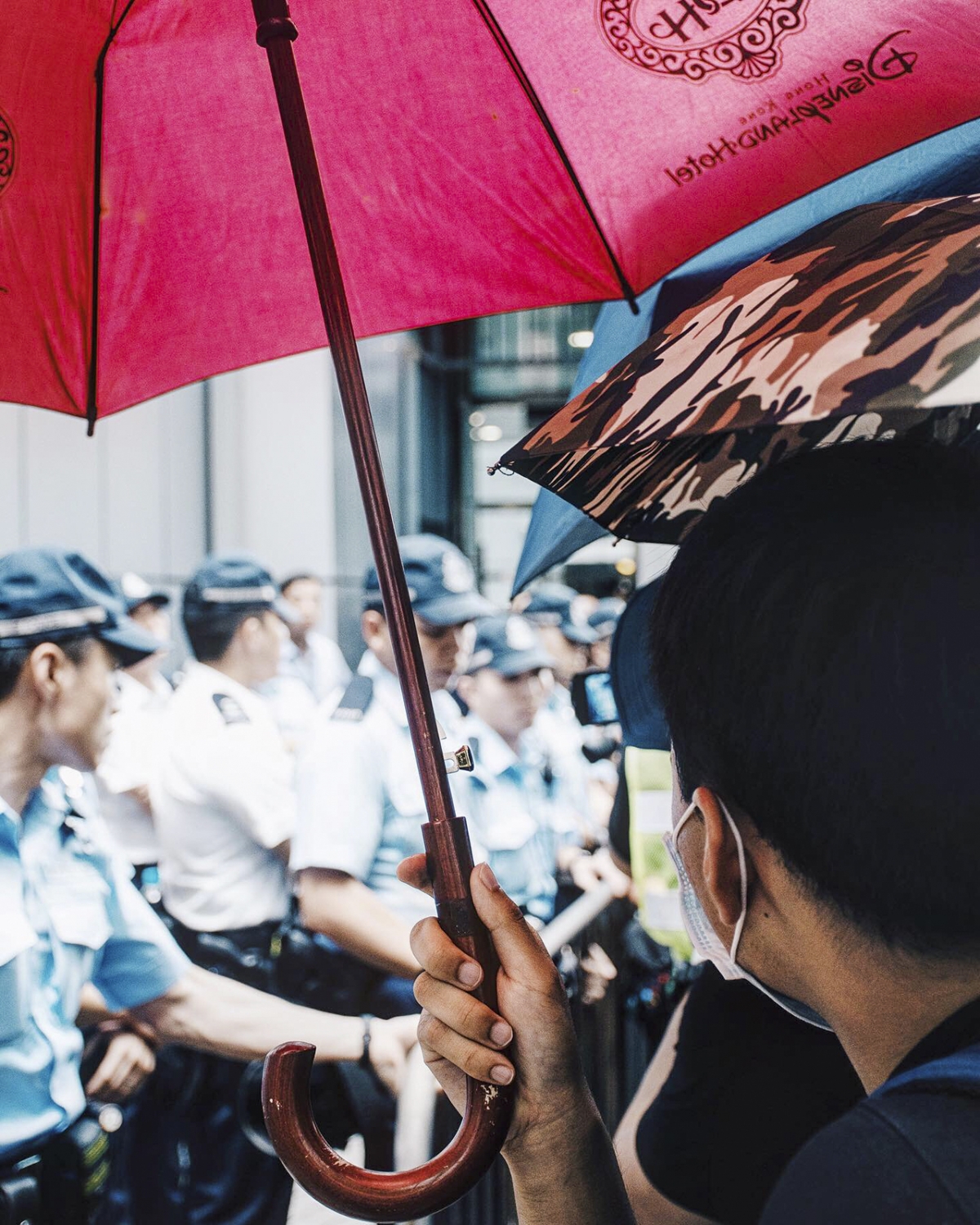The Quad: A breakdown of the causes of and issues surrounding the Hong Kong protests

In June, protests began over an extradition bill that would allow Hong Kong citizens to face trial in China for crimes committed there. The bill was formally withdrawn in October, but protesters continue to ask for stronger governmental reforms. (Lauren Man/Daily Bruin)

By Isabella Klesmith
Dec. 5, 2019 8:31 p.m.
In the United States, peaceful public protest is a fundamental right protected by the Constitution.
However, in other nations around the world, this essential right is threatened.
While many take this freedom for granted – especially college students who are becoming increasingly active in political protests – in other countries, such as China, protestors have been violently suppressed.
In June, political turmoil descended on Hong Kong, as protesters demanded the withdrawal of an extradition bill that, if passed, would permit the deportation of those in Hong Kong wanted for crimes in China to face trial there.
The Chinese and Hong Kong governments both claimed the extradition bill would not apply to political or religious criminals. This provision supposedly ensured that political dissidents seeking asylum in Hong Kong would not be jeopardized. However, protestors still fear that the bill would enable the Chinese government to subject people in Hong Kong to unfair trials, arbitrary detention and torture.
The British ceded control of Hong Kong to China in 1997 under the “one country, two systems” principle after over 150 years of British imperial rule. According to this principle, Hong Kong retained its own semi-democratic political and capitalist economic system under the authority of communist China.
For example, the governing document of Hong Kong, the Basic Law, guarantees certain freedoms to people in Hong Kong, such as freedom of speech and assembly, and establishes its separate and unique governmental structure.
However, Hong Kong protestors claim that the current government is not observing these democratic guarantees.
Hong Kong’s government officially withdrew the extradition bill in late October, but the protests have continued as marchers now demand broader governmental reforms. Through the demonstrations, protestors in Hong Kong hope to gain amnesty for arrested protestors, an independent inquiry into alleged police brutality and universal suffrage. The protestors also do not want the government to classify their protests as riots, as a rioting charge could result in a prison sentence.
While current protests have to do with issues surrounding the extradition bill, additional factors, such as changes in the relationship between Hong Kong and China as well as the lack of democracy in Hong Kong, have fanned the flames of this political explosion over the past few years.
Despite the systemic separation between China and Hong Kong, protestors have argued that China is increasingly inserting itself into Hong Kong’s affairs. Activists cite legal rulings that disqualified pro-democracy legislators and increasing censorship as well as the disappearance of Hong Kong booksellers as evidence of this incursion.
In addition to an end to Chinese intervention, protesters in Hong Kong are demanding more democracy.
[Related: Protesters in Westwood march in support of Hong Kong’s pro-democracy movement]
The Hong Kong government is comprised of a chief executive, legislative and district councils and a judiciary. Protesters are arguing that the Hong Kong government failed to deliver the level of democracy that the Basic Law and the “one country, two systems” principle promised.
Protesters point to two problems with the current government that prevent real democracy in Hong Kong – firstly, an election committee chosen by representatives that constitute only 6% of the electorate selects the chief executive. Secondly, the public directly elects only 35 of the 70 legislative council members. They argue that the elected officials do not truly represent the views of the people.
After years of waning democratic rights, tensions between activists and the government reached a peak. The first protest took place June 9 when approximately 1 million people participated in a peaceful march to the government headquarters after the proposal of the extradition bill.
Since June, these protests have grown in number and intensity. Recently, high school and college students occupied various universities, shutting down schools in protest of the government. The longest standoff occurred at Hong Kong Polytechnic University, where a police siege of the university lasted for more than 10 days and included the use of tear gas and real bullets.
While some portray these protesters as innocent youth activists faced with unwarranted police violence, the Hong Kong and Chinese governments emphasize their violent actions. Reports describe their use of Molotov cocktails, handmade gasoline bombs and bricks and arrows to fend off the enclosing police.
The 10-day standoff ended Nov. 27, as police and firefighters entered and cleared the university.
[ICYMI: Editorial: Students deserve for UC to make public its stance on Hong Kong protests]
In response to the destruction and violence, Hong Kong Chief Executive Carrie Lam invoked emergency powers Oct. 3 to ban protestors from wearing face masks. Lam hoped the ban would deter people from participating in growing protests across the city. If charged with rioting, one could face up to 10 years in prison.
While the city’s High Court declared the ban unconstitutional Nov. 18 as a violation of civil liberties guaranteed by the Basic Law, the court suspended the ruling four days later after China threatened to intervene and overrule the judiciary.
China is not the only foreign state getting involved in Hong Kong’s affairs. The U.S. recently passed the Hong Kong Human Rights and Democracy Act of 2019, which imposes property and visa-blocking sanctions on those responsible for human rights violations in Hong Kong, and mandates assessments of China’s actions to limit Hong Kong’s autonomy.
Although these protests severely disrupted life in Hong Kong, city elections Nov. 24 demonstrated the old adage that “the ballot is stronger than the bullet.”
More than 70% of the eligible electorate voted in the election for district councils, awarding a majority of seats to pro-democracy candidates. While these district seats are low-level positions, they send a message to higher government officials about public attitudes, as they are the only seats determined by universal suffrage in all of Hong Kong.
Although these protests seem far removed from UCLA, they actively influence places as close to home as Westwood Village. On Nov. 30, pro-democracy activists marched in Westwood Village in solidarity with Hong Kong protestors. These protestors hoped that their actions would help bring freedom and democracy to China, where such public protest is virtually impossible.
Other protests around campus further illustrate the role that college campuses play in political dissent. For example, university workers and students continue to participate in American Federation of State, County and Municipal Employees Local 3299 strikes to protest the University of California system’s alleged practice of outsourcing.
In both Hong Kong and Los Angeles, colleges serve as important sites of political protest. This role will only grow, as studies show that first-year college students in the U.S. show the greatest interest in political and civic engagement since the study began 50 years ago.
In 2047, the Basic Law expires and people in Hong Kong lose their guarantee of civil rights such as freedom of speech. The world will watch as students in Hong Kong, like those at UCLA, use both their votes and voices to attempt to determine their own future.

